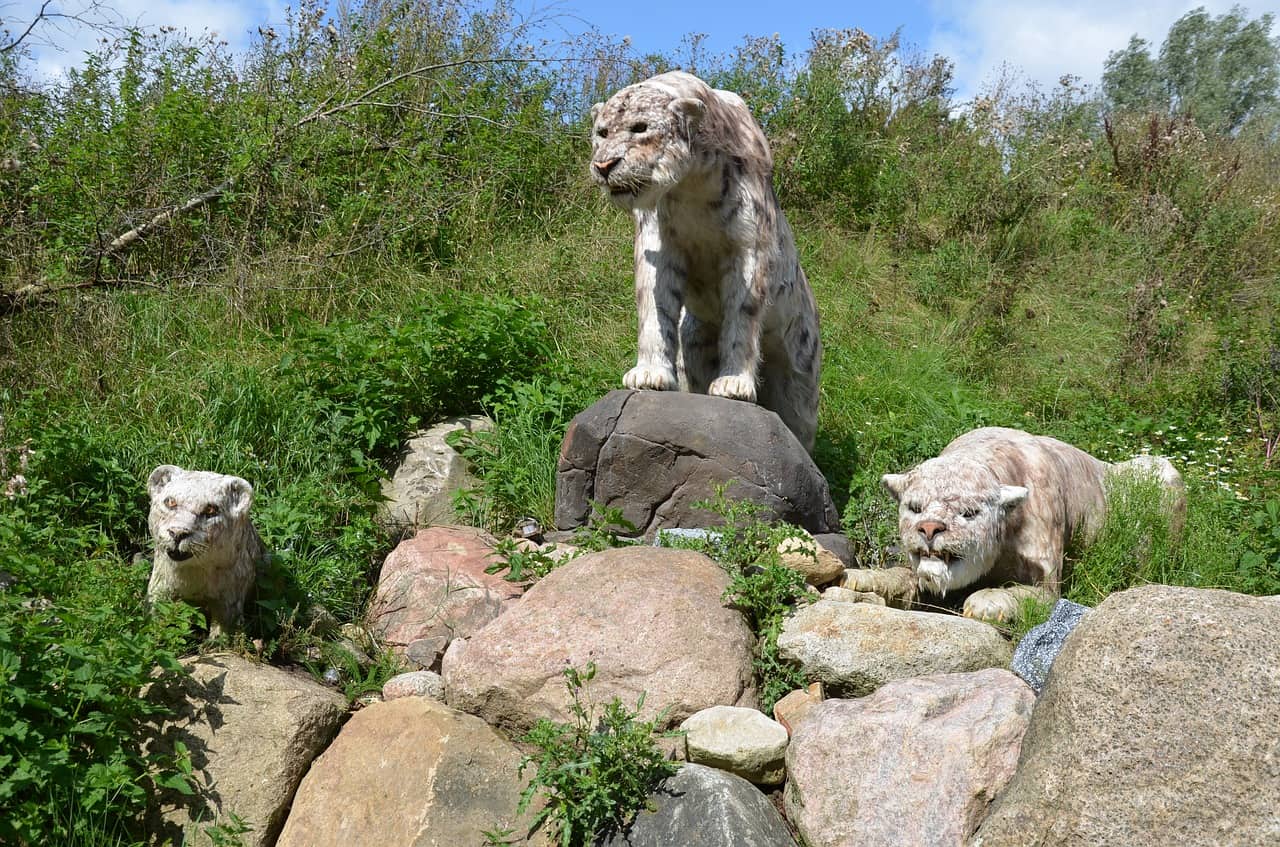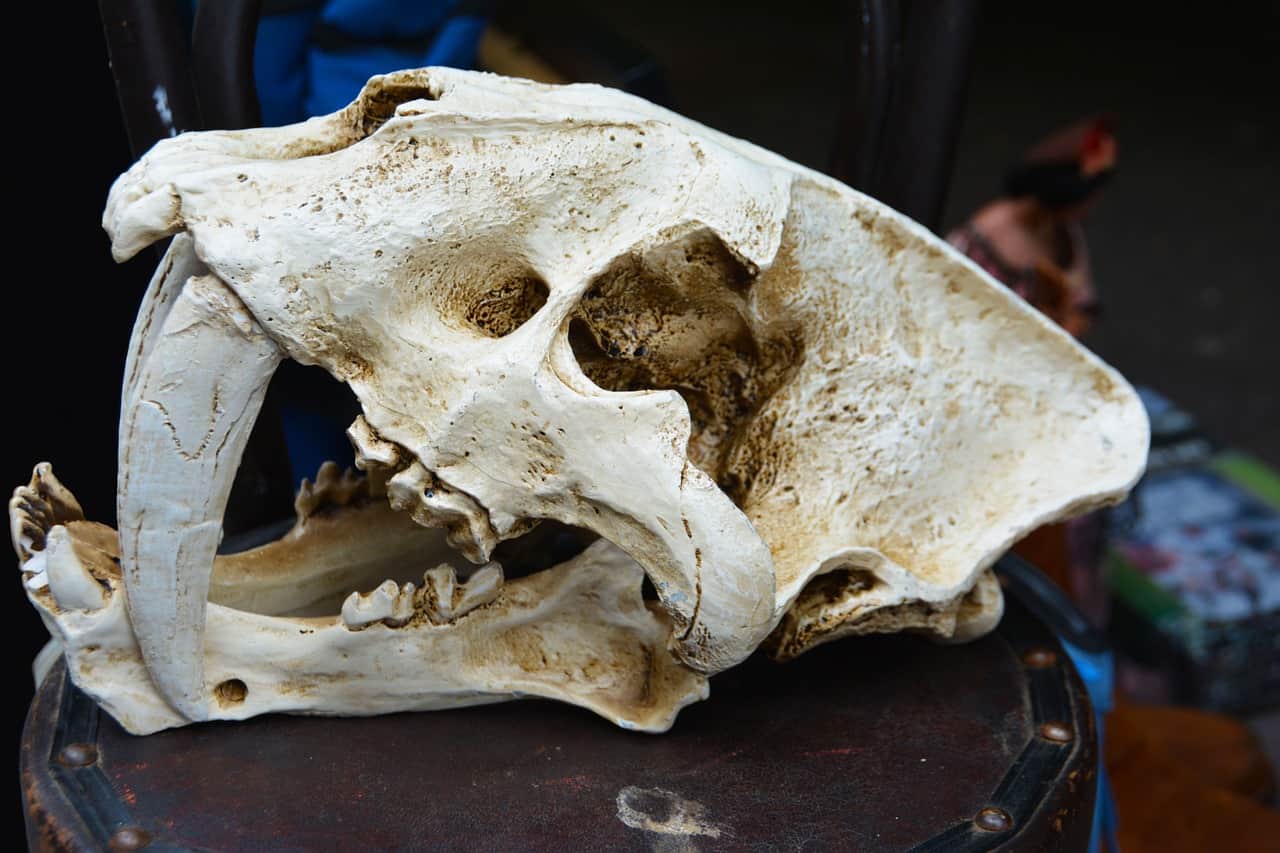
Wouldn’t it be cool if the Earth still had a living saber tooth tiger today? With their distinctly long canines, these animals became one of the most well-known prehistoric animals aside from dinosaurs. Around 37 million years ago, these animals also sat on top of the food chain until their extinction. While they may not be around today, there are still a lot of interesting things to know about them. Find out more about these creatures with these saber tooth tiger facts.
- The Smilodon started to roam the lands around 37 million years ago.
- The saber tooth tiger went extinct approximately 12,000 to 10,000 years ago.
- Their canines could grow over 7 inches in length.
- Saber tooth tigers can weigh between 160 – 300 kg while the modern lions only weigh 130 to 190kg.
- They can open their jaws up to 120°.
- While popularly used, the term “saber tooth tiger” is incorrect, since they are not felines.
- The saber tooth tiger is also known as the smilodon.
- Saber tooth tigers belong to the extinct machairodont genus.
- Saber tooth tigers coexisted with grey wolves and dire wolves.
- The saber tooth tiger is one of the most famous prehistoric mammals.
- Even though saber tooth ‘tiger’ is its name, smilodon was not exactly or completely related to the tiger.
- The smilodon used to live in North America and Europe.
- In North America, they lived as far as Idaho in the north to South America and from California to the west to Florida in the east.
- According to the most popular theory, the saber tooth tiger went extinct due to climate change, human hunting, and scarcity of food.
- The saber tooth tiger received its name for its large canine teeth.
- People used to believe that the saber tooth tiger was just a work of fiction.
- The saber tooth tiger’s teeth were curved and narrow, with sharp edges that they used to slice through the soft tissues of prey.
- The first saber tooth tiger fossil in the 19th century.
- Compared to a modern lion, the milodon was slightly shorter but heavier.
- Saber tooth tigers primarily fed on large herbivores such as bisons, mastodons, and ground sloths.
"Saber tooth tiger" is technically an incorrect name.
Based on fossils recovered from Brazil, scientists classified the smilodon under the Felidae family. Under a completely different family, this also meant that it wasn’t closely related to neither tigers nor domestic cats. That said, it is still commonly referred to as the saber-tooth tiger.
Woolly mammoths became extinct 6,000 years after the saber tooth tiger's extinction.
Around the same time that the saber tooth tiger went extinct, the American lion (Panthera atrox) also died out 10,000 years ago. Meanwhile, the famous Ice Age characters, wooly mammoths Manny and Ellie (Mammuthus primigenius) went extinct only 4,000 years ago.
The saber tooth tiger had a thick coat with a yellowish-beige color.
To survive the icy climate of the Pleistocene era, smilodon had thick coats that came in yellowish-beige tones similar to lions. Generally a stocky species, the saber tooth tiger had a broad chest, muscular body, and a short tail.
Saber tooth tigers may have behaved like lions.
According to research, saber tooth tigers lived in enclosed habitats such as bushes and forests which provided them enough cover for attacking its prey. Although it’s undetermined whether saber tooth tigers were social creatures, it’s more likely that they behaved comparably to modern lions.

Saber tooth tigers and the early humans may have hunted each other.
Some recovered skulls of prehistoric people bore wounds from long canine teeth, suspected to be from the saber tooth tigers. This evidence strongly suggests that humans and saber tooth tigers may have hunted each other during the Pleistocene. Due to this, it’s also a possible theory that humans hunted smilodon to extinction since smilodon had no natural predators before humans.
The canines of the saber tooth tiger grew two times faster than wild cats.
According to studies, their teeth grew two times faster than most current species of wild cats. At the age of 3 years, they would have already replaced their milk teeth with fully-developed canines that could easily tear apart meat.
Scientists believe that their lifespan is around 20 to 40 years.
Since they no longer exist, the exact lifespan of the saber tooth tiger remains a question. However, many scientists agree that they could live between 20 to 40 years in the wild.
The jaw of the saber tooth tiger is not that strong compared to present-day lions.
Although they had much bigger and sharper teeth, the saber tooth tiger’s bite had a force 3 times weaker than modern wild cats. With that, it’s also believed that lions and jaguars evolved with a stronger bite to make up for their smaller teeth.
Saber tooth tigers started to develop their adult teeth within 1.6 years of age.
As it grew out its milk teeth, saber tooth tigers went through a period of having two sets of canines due to its adult teeth emerging. This usually happened when the saber tooth tiger reached 11th months of age.

The brain of the saber tooth tiger had a similar pattern to modern cats.
While they are unrelated, saber tooth tigers and cats share similar brain activity. This indicates an increased complexity of its senses such as sight, hearing, and muscle coordination. However, smilodon used to have moderately small eyes compared to modern cats, and were not as forward-facing as these felines.
More than 100,000 smilodon bones have been collected in the La Brea Tar Pits.
More than 100,000 smilodon bones have been collected in the La Brea Tar Pits. These bones represent approximately 2000 individual animals. California’s La Brea Tar Pits have excavated over 3 million fossils from different animals thus far.
According to research, vegetarian aminals such as bison got trapped in the tar, which lured in predators like saber tooth tigers to a deadly feast. Unfortunately, most of these predators got trapped in the pit as will. In fact, around 90% of the pit’s fossils came from different kinds of carnivores.
Was this page helpful?
Our commitment to delivering trustworthy and engaging content is at the heart of what we do. Each fact on our site is contributed by real users like you, bringing a wealth of diverse insights and information. To ensure the highest standards of accuracy and reliability, our dedicated editors meticulously review each submission. This process guarantees that the facts we share are not only fascinating but also credible. Trust in our commitment to quality and authenticity as you explore and learn with us.
